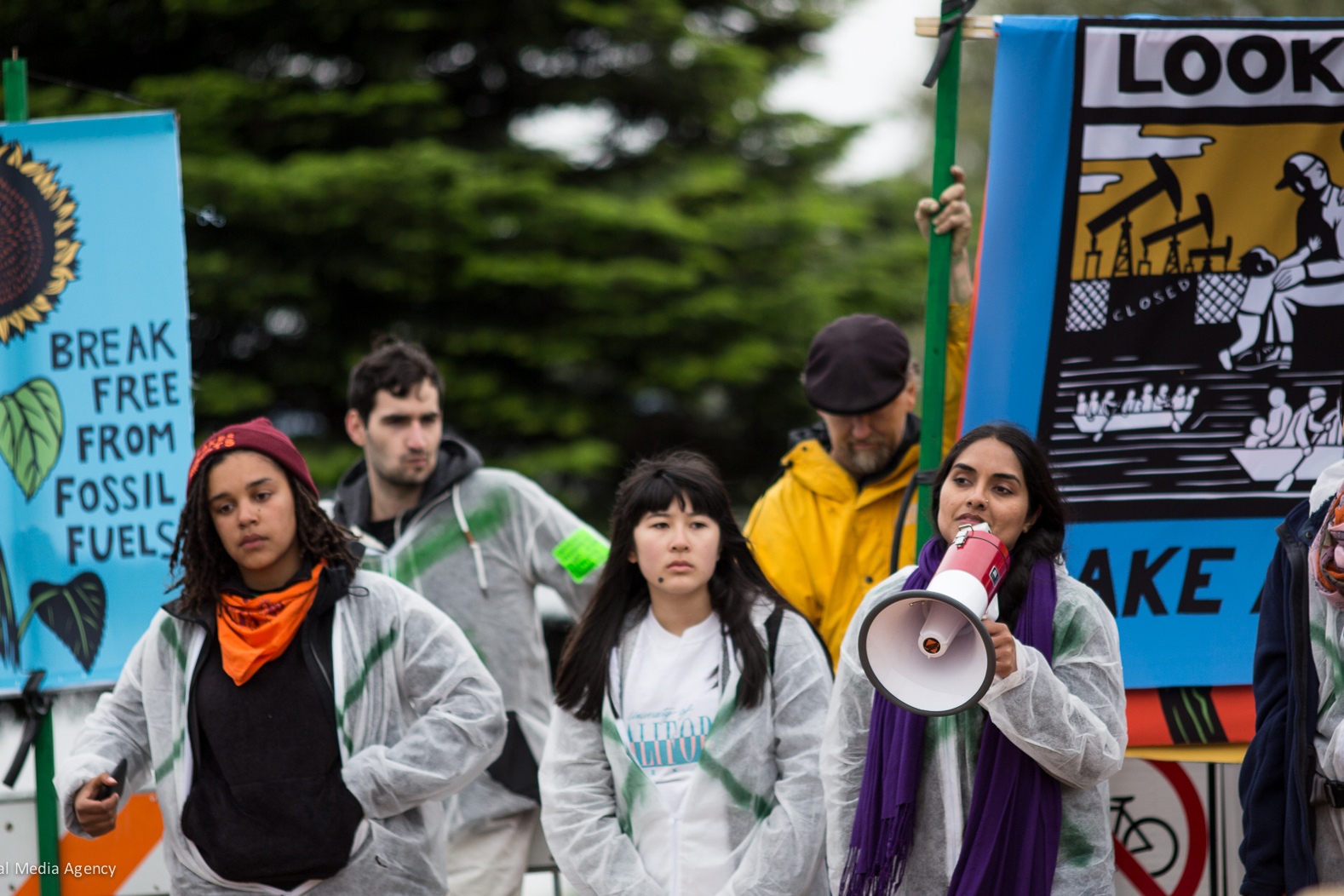“It’s not a plan that tinkers around the edges,” said President Joe Biden at a speech in Pittsburgh this past March. “It’s a once-in-a generation investment in America, unlike anything we’ve seen or done since we built the Interstate Highway System and the Space Race decades ago.”
In his 2020 campaign promises, Biden said that he would get the United States to be carbon neutral by 2050. That’s not an ambitious goal—it’s something we’ve needed to do for a really long time. He came out as a big proponent of climate science and supporting the idea that we need to make changes that seem radical—but really aren’t. But at this point, it needs to happen. Here we are, nearly seven months after he was inaugurated, and what has Biden done? Has he kept up to that promise of searching for carbon neutrality by 2050?
That’s where the Infrastructure Bill comes in. Infrastructure may not be automatically linked with thinking of climate change or ways to promote clean energy. But, secretly, that’s what this bill is doing.
Initially, Biden had planned this bill as its own entity outside of another bill that he proposed called the American Jobs Plan. Now, months after both of those bills had been proposed, he has decided to combine the two of them, while also excluding some parts of the American Jobs Plan. Cumulatively, the two attack climate change from an aspect that is economically savvy and supports job growth in the United States.
You heard that right—Biden is attacking climate change by supplying jobs for Americans. What a revolutionary concept. The question is, is that enough? Is proposing a bipartisan infrastructure bill with an accumulation of jobs and a tax plan going to help us get to carbon neutrality by 2050? We need to be doing this now—even though, by the way, it’s not enough.
According to Dr. Katharine Wilkinson, 25% of global emissions are made from making electricity, 24% by food, agriculture and land use, 20% by industry (which just includes factories making stuff), 15% by transportation, 5% by infrastructure inside of buildings (the gas and heat used to run homes or office buildings) and 10% from extracting, processing and transporting fossil fuels.
If Biden really wants to tackle climate change, he needs to hit all six of these categories. But after dissecting the infrastructure bill, it is clear that he is not doing that. The only way to get to carbon neutral is to support policies that go after each one of these categories, to break down the use of carbon in the United States. What is Biden doing to combat climate change through this bill, then? The six categories can be broken down, as Wilkinson listed, to analyze exactly what Biden is doing and how effective it is.
The first category is making electricity—25% of all global emissions. Biden has promised to “upgrade our power infrastructure, including by building thousands of miles of new, resilient transmission lines to facilitate the expansion of renewable energy.” He expands on this by creating a Grid Authority that is responsible for this plan, and he’s decided that Congress needs to put $73 billion towards power infrastructure.
Biden is attacking electricity emissions by building more transmission lines. While these transition lines do intend to expand the use of renewable energy, it’s not enough. According to the 2035 Report study by the University of California, Berkeley, in order to combat this 25% of global emissions, clean energy is needed everywhere the eye can see. Only then could the U.S. actually create enough clean energy in the designated amount of time. However, expansions of transmission lines are not the same as expanding renewable energy. Biden has stated he is committed to doing so, but it’s not the same as supplying everyone with solar power or wind energy. It’s a start. At least he’s supporting renewable energy in some facet.
Furthermore, this section of the bill establishes Energy Efficient and Clean Electricity Standards. These standards help companies and state governments support renewable energy. You heard that right: Biden’s giving companies reachable goals to create renewable energy. He is using the government to mandate that power companies move towards clean energy; that’s something that’s never been done before. In doing so, Biden is ensuring that the U.S. moves towards clean energy, even in the private sector.
The transportation category, which makes up for 15% of global emissions, is really what the infrastructure bill is made for. The bill intends to “repair and rebuild our roads and bridges with a focus on climate change mitigation, resilience, equity, and safety for all users, including cyclists and pedestrians.” In total, Biden intends for Congress to put $284 billion towards transportation emissions. He is doing this by fixing our roads, creating a national network of electric vehicle chargers, electrifying transit and school buses and expanding our public transit system to make it more accessible for people. Electric vehicles and public transportation are significantly better than the gas-guzzling vehicles that millions of Americans drive every single day. By doing this, Biden is tackling the transportation sector by thoroughly implementing different tactics. He’s going to fix our roads and support infrastructure that allows electric vehicles to become more popularized, affordable and accessible for everyday people. The bill also supports a rail system which will help those that use public transportation systems, for less congestion on the roads and less global emissions.
However, Biden is failing to tackle the industrial section. Industries make up for 20% of all global emissions, yet the only real way that Biden plans to attack this is through his Made in America Tax Plan. This tax plan supports equitable tax funds and makes sure that companies are actually paying their taxes—I’m looking at you, Jeff Bezos. However, the only truly climate change-focused part of this plan is to make sure that companies are actually paying for the pollution they are producing. When companies spill oil in the middle of an ocean and ruin ecosystems, they would be monetarily paying for it. Again, that is not a revolutionary idea; it should have been happening in the first place. But I digress. Biden’s only plan of attacking 20% of global emissions is through a tax plan, so he needs to come up with another idea. We’re only going to reach carbon neutrality if Biden manages to handle every single part of global emissions, and denying industries is not helpful.
In the last three categories, infrastructure of buildings makes up for 5% of global carbon emissions, but it is not found anywhere under the Infrastructure Bill. However, it is under the American Jobs Plan—in a part that isn’t included in the Infrastructure Bill—called “human infrastructure.” This includes rebuilding and updating our schools, making sure that childcare is accessible and making sure that buildings are healthy and safe, including the equity and safety of those workspaces. However, re-labeling this “human infrastructure” doesn’t follow the direct definition of what infrastructure is.
Additionally, this part is not included in the Infrastructure Bill, noted as being bipartisan, because it’s being put in another Democrat-only bill that will most likely include more climate change policies. “Human infrastructure” implies that this is part of human-caused climate change, which historically has not been supported nor agreed upon by the GOP. In order to really combat and create a bipartisan bill, the GOP would not support any part that claims that humans are causing climate change. So while Biden isn’t tackling the buildings portion right now, he’s in the process of getting to it.
Next, agriculture land use and food supply, which makes up 24% of global carbon emissions, is not found in the infrastructure bill whatsoever. We need to do something about our agriculture—it’s 24-freaking-% of the problem. Failing to tackle this part of global emissions is a huge error and supports the claim that this bill is not enough.
Furthermore, Biden does not attack the 10% of transporting, extracting and processing fossil fuels. Although this may possibly be included under the tax plan and the same write-off that he included for industry, it’s not included under the Infrastructure Bill, further proving that he’s not doing enough.
So, in total, Biden and his infrastructure bill are truly only accounting for 40% of global carbon emissions. That is not going to get us to where we need to be soon enough. His goal of being carbon neutral by 2050 is too kind. The only way that we’re going to combat climate change is if solid policies that further engage in protecting and slowing down climate change are laid down.
Although 40% is a solid chunk, none of it matters if the energy used to produce those results does not come from clean energy. Burning fossil fuels to make wind turbines just does not make sense. If Biden is really in support of climate change policies, he will lay down the needed facets not only to support infrastructure, but to support it in an ethical and clean way. Otherwise, any progress that we will be making is damaged.
This infrastructure bill is unlike anything that Congress has seen before in the entire history of the United States. This truly is a once-in-a-generation bill, and it is just the start to combating climate change.






